For such a small plant the Tansy Mustard has a huge history. I saw my first Tansy Mustard of the season Sunday in Jacksonville. This little gray-green mustard is a winter annual here and is quite consistent where it likes to grow: Dry spots with only natural watering. It’s fairly a common find this time of year in paddocks and other farm areas that include oak scrub. The sample this weekend was growing along a side walk on a dry area of a college campus. Its minute seeds were a major staple for some Indian tribes and the leaves are edible raw or cooked. To read more about the Tansy Mustard go here.
Saturday in Winter Park another winter mustard was discovered, the bright green Swine Cress. Unlike the Tansy Mustard (above) it is often in well-watered lawns. There are two species of Swine Cress in the Americas. Both are not native but are widely dispersed so there is probably one near you when the season is right. Our local version is very peppery which lends itself more to a spice than a pot herb, depending upon how tough your tummy is. It’s also impossible to mis-identify when it has gone to seed. To read why and for more information about the Swine Cress go here.
Botany Builder #35: The first wild edibles most people learn are forbs (green plants.) Then they move on to trees, a challenge but doable. Trees are usually followed by grasses — much more difficult — then maybe mushrooms, a class unto themselves. Each group has its own language, particularly grasses and mushrooms. Still, when you read about trees you learn about boles (trunks) and duramen. The “duramen” is the heartwood, the center of the bole or branch. It provides the structural support holding the tree up or the branch out. Duramen is from the Dead Latin durare, to harden. It is also the basis for the English word “durable” and the surname Durant or Durante. You can say the tree has an attractive heartwood or the bole has an attractive duramen.
Last week we carried part one of “To Shroom Or Not To Shroom, That Is The Question,” by Dewayne Allday. This week we finish the article with Part II, a few of the mushrooms he’s had experience with.”
A mushroom, also called toadstool, is actually just the above ground fruiting spore bearing portion of the fungus that you see. The mycelium is the vegetative portion of the fungus, which is hidden in the ground or other substrates, therefore picking the mushroom does not destroy the mycelium. Think of foraging for mushrooms as picking roses off a rose bush. More “flowers” (mushrooms) will come back later.
Like plants, mushrooms are broken down into families, genera and species and have specific growing seasons. Some have long seasons, but others have very short seasons only lasting a few weeks. One of my favorite mushrooms which grows in the summer and fall is the Chanterelle – Cantharellus cibarius, although there are numerous species. There are a few look-a-likes including the famous “Jack O’Lantern” mushroom – Omphalotus illudens – which actually glows in the dark. If you know your mushrooms, it’s really difficult to get them confused. Like everything else in life, you can make it as easy or as complicated as you’d like. There are actually four genera in the Chanterelle Family; Cantharellus, Gomphus, Polyozellus and Craterellus. Some are edible and some or not. As the old saying goes, do not eat unless you’re absolutely positive and even then let someone you dislike eat it first (only kidding). Sautéed, that’s how I like them, but if you like a good stiff drink, Peter Jordan and Steven Wheeler in their book, The Complete Book of Mushrooms, discuss soaking them in vodka thereby transferring the apricot flavor of the mushroom into the vodka for a nice alcoholic beverage. Personally after the drink is ready, I’d sauté those soaked Chanterelles right on up and drink while I cooked them.
Some edible mushrooms growing right now are the puffballs of the order Lycoperdales. When ripe, they are pretty safe and in this family poisonous ones are very rare. However, I can’t mention edible puffballs without also mentioning the deadly Amanitas. You see, when an Amanita is early stage just popping out of the ground, it resembles a puffball because it is enveloped by what’s called a universal veil giving it a puffball or “egg” like appearance. The difference can be spotted by cutting the “egg” looking shroom lengthwise. A puffball is always completely solid inside and the Amanita will not be solid, and may even reveal the outline of the mushroom inside. It’s crucial to know the difference because according to David Arora in his book Mushrooms Demystified, Amanitas are responsible for around 90% of mushroom fatalities.
Many puffballs are completely edible and can often be found in great abundance, even during winter months. Like many other mushrooms, I like them sautéed with butter. One must be able to tell the difference though between a puffball and a young Amanita because one will fill you and one will kill you.
Once maturing, Amanitas have distinct features which, when recognized, are very hard to miss. However, some of these items may or may not be present when the mushroom matures. The base of mushroom, also called the volva, will always be swollen, some species more than others. Despite there actually being a few of the mushrooms in this genus that are edible, many mycologists do not recommend eating them “just in case” you misidentify. It’s probably best to stay away from them especially if you’re a newcomer to mushrooms. This is one area where that old Army Survival Manual is wrong. The universal edibility test mentioned in it will not help you with many poisonous mushrooms or plants. Some of the most poisonous ones actually taste good. It was only last summer I heard about a guy losing a kidney after cooking up a Destroying Angel Amanita at a community college here in Alabama. He couldn’t even drive himself to the hospital.
Another deadly mushroom that grows in our area is the Deadly Galerina – Galerina autumnalis. Interestingly enough I was just reading in a mushroom forum not long ago where a guy was discussing how he thought he and a buddy had just accidentally eaten the Deadly Galerina thinking they were psilocybin’s. The subject heading of the thread was “I think I may have eaten Deadly Galerina – Please help!”. When you read his words, you could feel the urgency of his request. Help me! It’s ironic that in the National Audubon Society Field Guide to Mushrooms, a picture of one of the deadly poisonous Galerinas was on the same page as one of the Psilocybin mushrooms. My recommendation is no Trippin’ Picken or you might get more than Sicken!
On a positive note, two almost unmistakable choice mushrooms also grow in the fall and winter. Not only are the Hen of the Woods (Maitake) Mushroom and the Lion’s Mane mushroom choice edibles which are medicinal as well, but we also have various species (and colors) of oyster mushrooms.
One thing I love about edible and medicinal wild plants and mushrooms is that you can never learn everything there is, therefore you can never get bored. Plants and mushrooms are not only good for you, but many of them are more nutritious than store bought food. If you love the outdoors, but get bored with only putting deer and turkey meat in your freezer, you could branch out into foraging plants and mushrooms and have a very diverse range of food to eat at any given time of the year. Come join us. Be safe and happy hunting!
Thank you Dew for the article on foraging and mushrooms. If you would like to have an article considered for the newsletter, and read by thousands, please contact Green Deane. Also Green Deane has several mushroom pages on Facebook: Florida Mushroom Identification Forum, Southeastern US Mushroom Identification, and, Edible Mushrooms: Florida. There is also the Green Deane Forum where we talk about foraging all year.
A little over a month from now will be the Florida EarthSkills gathering. This year it will be held at Little Orange Creek Nature Park, which is a little over a mile east of Hawthorne, Florida. I will be giving plant walks there and as this is a new location it should an interesting place to explore. Dates are the 6th through the 9th of February. EarthSkills conferences differ greatly from herbal conferences. While one can find herbalism at an EarthSkills gathering it is what the name implies, earth skills. You can learn a variety of skills and techniques from identifying edible weeds to making a bow to dying your own handmade clothes. It’s a very communal gathering that reminds me of many such free-spirited events back in the 60s. Cool! See you there.
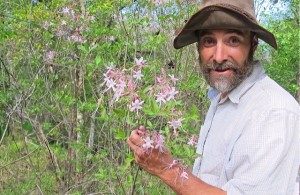
Mycol Stevens will be leading classes at the Florida Herbal Conference and the Earthskills gathering above.
This is a reminder the Florida Herbal Conference 2014 will be held in Deland in late February. Also for the third year in a row I will be leading weed walks at the conference, a challenge in winter on dry ground. My walks are usually first thing in the morning when the air is cool and the coffee hot. Although it is the Florida Herbal Conference it draws teachers and students from all over North America. Two other Florida “locals” will be teaching classes besides the scheduled main speakers. They are Mycol Stevens of Gainesville, and Andy Firk who holds a wide variety of workshops throughout the year at his “Bamboo Cove” in Arcadia. Mycol’s name used to be Michael but he came to like mushrooms and other fungi so well he changed the spelling.
Though your foraging may drop off during the winter it’s a great time to study wild edibles with my nine DVD set. Each DVDs has 15 videos for 135 in all. They make a great gift. Order today. Some of these videos are of better quality than my free ones on the Internet. They are the same videos but many people like to have their own copy. I burn and compile the sets myself so if you have any issues I handle them personally. There are no middle foragers. And I’m working on adding a tenth DVD. To learn more about the DVDs or to order them click here.

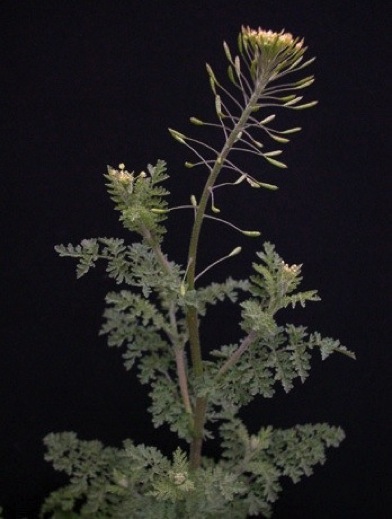
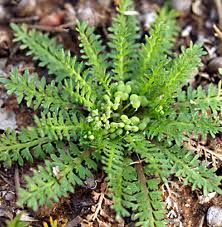
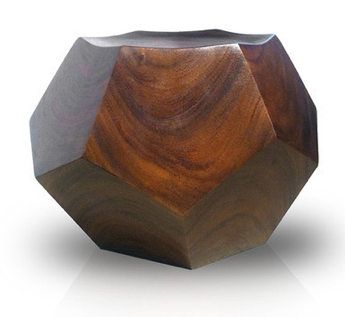

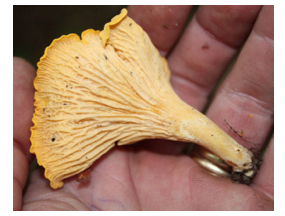
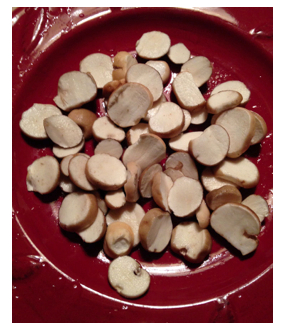
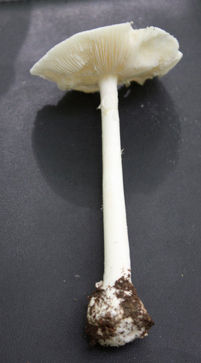
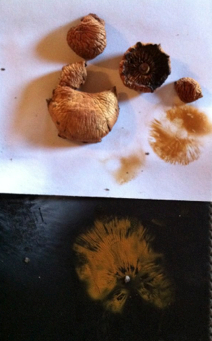
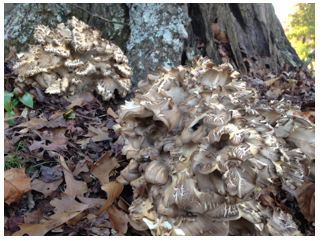
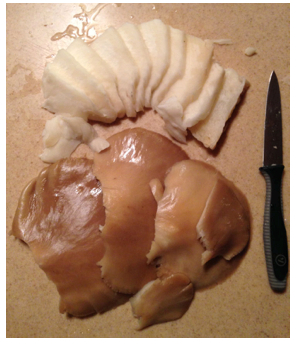
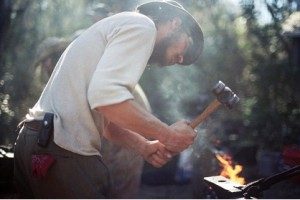
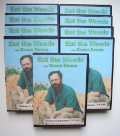

Very much appreciate the series on mushrooms from Dew.
Positive, educational and enlightening.
Thanks much.
CCE
You’re welcome. Glad you enjoyed it.
On Tanzy mustard, as you’ve mentioned “ We would always opt for its scientific name Descurainia pinnata. “. Much longing to learn about “Mustard “ , I was lucky to obtain some seeds from a big U.K. store. Among seven smaller packets of “nice and spicy collection” as described on the bigger packet, No.6 allotted for “Mustard greens” while the smaller packet carried the name “Mizuna “; however all seven are edible. Now after five weeks those very extremely tiny seeds sown in clay Nile soil have given birth to plants – serrate green leaves radiating like radish (but with a slender tap root) of height about 30 cm. above soil level. The size of this mustard seed reminds of the advice of Logman Al Hakeem (referred to whenever WISDOM is mentioned ) to his son as in the holy verse “My son if it should be but the weight of one grain of mustard seeds and though it be on a rock or in the heavens or in the earth, Allah shall bring it. Surely Allah is the Subtle, Aware.”(Koran – more than 14cenyuaries ago” At first I thought my plant is Brassica alba which is used for grazing in most of our Arab countries e.g. Saudi Arabia . As in the holy verse the Arabic name “khurdul” is designated to Brassica alba. Until now my plant is not blossoming ; hence I can’t use flowers to get the scientific name. Going back to “Mizuna – mustard greens” on the packet, I’ve to bear in mind that I’m dealing with an edible may be totally non poisonous plant. Here I got other names specifically “Brassica juncea var. japonica”. Finally I think I’ve reached my target on looking at fig.78 Brassica monensis Huds according to reference: http://luirig.altervista.org./naturaitaliana/viewpics.php?title=Brassica+monensis. Chose N.I.T. Foto- Brassica hirta monensis. By the way mustard condiments have recently been introduced into Sudanese people’s food . After all I said to myself ,being a chemist, is’nt this more worthy to write about than to write about “Mustard gas – C4H8Cl2S” ! Let us love NATURE.